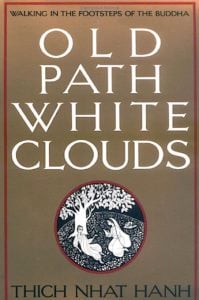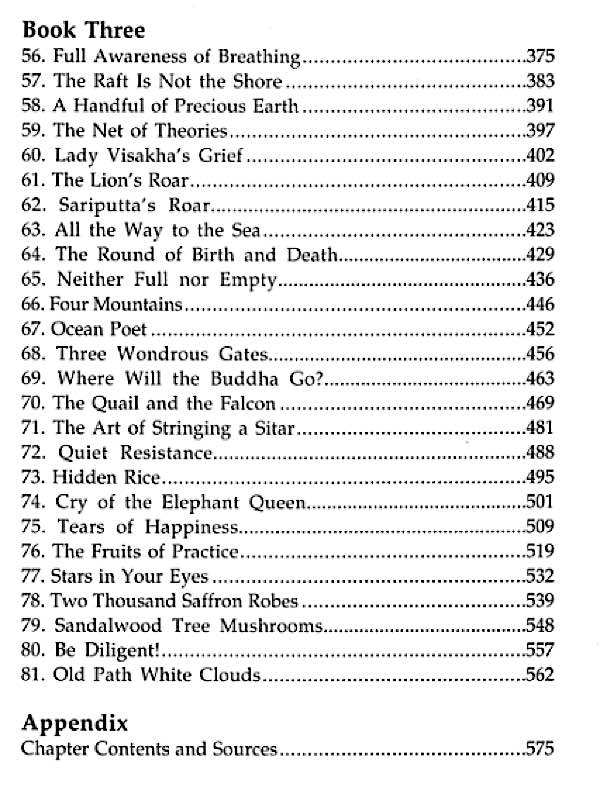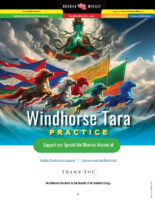Pali Sutta for Our Age: Old Path White Clouds: Walking in the Footsteps of the Buddha by Thich Nhat Hanh, a Book Review of a Classic
Old Path White Clouds: Walking in the Footsteps of the Buddha is about as close any of us will get to actually simulating what it felt like to live alongside and learn from the greatest teacher of all tilme. This book is as much an experience as a classic book.
There are many great English translations of much of the Pali Canon — most of it freely available online — making the great teachings of the Buddha highly accessible. Although there have been many “narrative collections” — and even one or two “novelizations” — of Buddha’s life and teachings, only one really stood out for me over the years. I first read Old Path White Clouds: Walking in the Footsteps of the Buddha years ago. I consider this a classic and I return to it often, probably annually, and I realized I’ve never reviewed this timeless book. If you haven’t added this to your library, or your ebook library, here’s why I think you should consider adding it. (It’s worth noting that this priceless book has a collective average 4.8 stars out of 5 rating on Good Reads with 2505 reviewers. That’s saying something.)

Publisher: Parallax Pr (November 1990)
Language: English
ISBN-10: 0938077406
ISBN-13: 978-0938077404
It’s difficult to characterize Old Path White Clouds: Walking in the Footsteps of the Buddha, by Thich Nhat Hanh. It’s an older book (1987) that didn’t get as much attention as some of his other books, but it’s worth a look for anyone who hasn’t read it, or someone starting out in Buddhism, or someone who want a modern-day approachable version of Sutta teachings.
Is it a novelization of Buddha’s life and teachings — as has been unsuccessfully attempted a few times (unsuccessfully, at least from the point of view of sutta authority of teachings) — or is it a non-fiction “biography” style narrative, or is it a collection of the Suttas, or is it something else? Mostly, it’s something else. It reads like a novel, certainly, but carries the full weight of credible teachings from the Suttas, wound together into a narrative from one of Buddha’s monks — who we first meet as a boy “untouchable” in India.
 In Old Path White Clouds: Walking in the Footsteps of the Buddha, the great Zen Master Thich Nhat Hanh, makes the original Pali Suttas more engaging to modern students.
In Old Path White Clouds: Walking in the Footsteps of the Buddha, the great Zen Master Thich Nhat Hanh, makes the original Pali Suttas more engaging to modern students.
I suppose it takes a great teacher, who can speak with authority (as opposed to a scholar or a novelist), to carry this off. Across 600 pages, each time I read, I find myself nodding and smiling and learning and making notes.
Ratings
- MUST READ for new students or people considering Buddhism
- MUST READ for any student who has struggled with staying focused on translations of Sutta now available
- SHOULD READ for any Buddhist interested in the original Sutta teachings
- GOOD READ for anyone who enjoys uplifting stories with moral compass (regardless of spiritual path)
- AVOID the READ if you are hyper critical of any treatment of Sutta material (although bearing in mind Thich Nhat Hanh is a well-known teacher who took few liberties with the material for dramatic purposes, other than the narrative binding character).
Overall Summary
Written in a clear, simple, approachable style, Thich Nhat Hanh has achieved a blend of “engaged” and enjoyable read with purity and authority of teaching. Limiting his narrative to the Pali Suttas, even though he is a Zen (Mahayana) teacher makes the book unversally appealing. The choice of winding the sutta content into a narrative story-line is not new, but here, it is masterfully crafted.
Modern narrative engagement: enjoy the read
Perhaps the concepts of “enjoy” and Sutta are not meant to go together; after all, we speak in Sutta of the twelve links of Dependent Co-Origination and the downsides of emotional attachment. Still, a certain level of enjoyment is needed in a read of Sutta for the average student. This book is NOT fo scholars and probably not for teachers, but it’s wonderful for most students. Thich Nhat Hanh strikes that needed balance of “modern engagement” and “authority” of teachings.
In the extensive Appendix, Thich Nhat Hanh lists the many sutras he incorporates into the narrative. He writes,
“In researching and writing this book I have drawn almost exclusively from the texts of the so-called “Lesser Vehicle,” purposely using very little from Mahayana texts in order to demonstrate that the more expansive ideas and doctrines associated with Mahayana can be found in the earlier Pali Nikayas…”
No miracles, plenty of profound wisdom

Thich Nhat Hanh limited the narrative to the older Pali Sutta and avoided “miraculous” events that are layered into some stories.
A quick look at the contents (below) reveals that all the key teachings are contained in his wonderful narrative work. Although it is true that some liberties are taken in the connecting narrative — in terms of adding “dialogue” to the characters who interact with the Buddha — that is devised to make this a cohesive story — the actual Sutta content is sincerely and properly presented in modern, approachable language.
The Vast scope: but a fast read
I have copies of nearly all translated sutta in English. It would be a daunting task to work through them all, as I have been trying to do over the last few years. The Suttas are priceless, and perfect, and engaging, but they were written centuries ago. Which is why I frequently return to this book. Thich Nhat Hanh presents most of the most important teachings in a narrative style that pulls you through the entire body of teachings in days, not weeks. This will never replace sutta, but it’s a wonderful introduction.
A quick summary of the book reveals just how powerful the content is from a modern-practice point of view.
In the first chapter, the narrative character Svasti meets the Buddha in Uruvela village. It’s worth noting that Svasti becomes an important narrative glue to the overall narrative. For those who have studied Sutta, the titles of the chapters below will be enough to demonstrate how comprehensive this narrative is:



More articles by this author
Search
Latest Features
Please support the "Spread the Dharma" mission as one of our heroic Dharma Supporting Members, or with a one-time donation.
Please Help Support the “Spread the Dharma” Mission!

Be a part of the noble mission as a supporting member or a patron, or a volunteer contributor of content.
The power of Dharma to help sentient beings, in part, lies in ensuring access to Buddha’s precious Dharma — the mission of Buddha Weekly. We can’t do it without you!
A non-profit association since 2007, Buddha Weekly published many feature articles, videos, and, podcasts. Please consider supporting the mission to preserve and “Spread the Dharma." Your support as either a patron or a supporting member helps defray the high costs of producing quality Dharma content. Thank you! Learn more here, or become one of our super karma heroes on Patreon.
Josephine Nolan
Author | Buddha Weekly
Josephine Nolan is an editor and contributing feature writer for several online publications, including EDI Weekly and Buddha Weekly.














